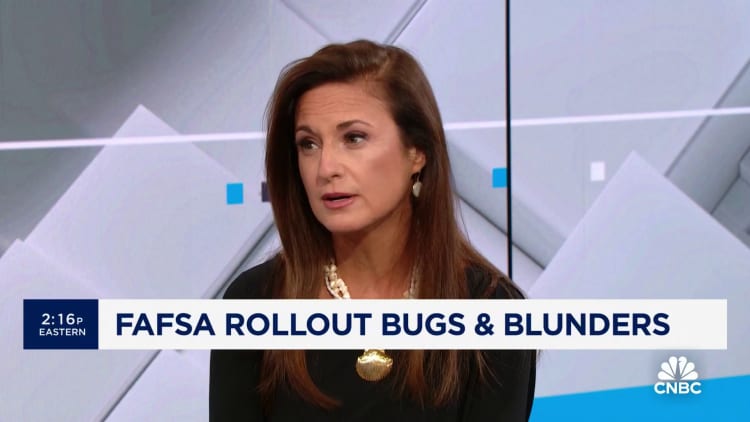Delaware College of Art and Design in Wilmington, Delaware.
Google Earth
The Delaware College of Art and Design announced on May 23 that it’s set to close, citing low enrollment numbers for the upcoming school year, due in part to issues with the new Free Application for Federal Student Aid.
Experts have continuously warned that ongoing problems with the new FAFSA form have resulted in fewer students applying for financial aid, which could contribute to already declining enrollment.
“Like many independent art and design schools, DCAD faces long-standing challenges related to declining enrollment, a shrinking pool of college-age students, rising costs, and unexpected issues with the rollout of the new Free Application for Federal Student Aid (FAFSA),” the college’s president Jean Dahlgren said in the announcement. The original webpage with the announcement was not accessible Wednesday but can still be viewed through the Internet Archive.
Enrollment at DCAD fell to 129 students, a loss of nearly 10%, between 2017 and 2022, according to federal data.
“The Board of Trustees has worked diligently to find other funding solutions, but none allow us to overcome the longer-term problem of too few students,” Dahlgren added.
More from Personal Finance:
Education Department announces highest student loan rates
Incoming college students may owe $37,000 by graduation
Students are still waiting on financial aid amid FAFSA issues
The 27-year-old art and design school in Wilmington, Delaware, will no longer offer classes or confer degrees for the 2024-25 academic year, the school said.
Many colleges are under financial strain
Fewer students today are interested in pursuing any sort of degree after high school, and the population of college-aged students is also shrinking, a trend referred to as the “enrollment cliff.”
The consequences of fewer students and less tuition revenue have put many colleges under financial pressure.
Among those smaller schools, this may be the first college to close that directly referenced the added pressure from the rocky FAFSA rollout, but likely not the last, according to higher education expert Mark Kantrowitz.
Given the current status of FAFSA submissions, the Department of Education is on track to see 1.5 million to 1.8 million fewer FAFSAs submitted this year, Kantrowitz estimated.
This shortfall could cause a potential impending enrollment decline even greater than the one experienced at the height of the Covid-19 pandemic, he said, when college attendance notched the largest two-year drop in 50 years.
Kantrowitz added that college revenue will be broadly impacted, “from tuition, fees, room and board, not just a decrease in financial aid funding.”
For colleges teetering on the brink of insolvency, “even a modest decline in college enrollment could push them over the edge of a financial cliff,” Kantrowitz said.

Further, long-term consequences might still be felt in the years ahead.
“If the students aren’t just taking a gap year or shifting enrollment to community colleges, but instead opting out of college entirely due to the uncertainty surrounding college affordability, the impact may last for four years,” Kantrowitz said.
“It is severe enough that it may cause some four-year colleges to close permanently,” he added.
The Department of Education said providing support to colleges and universities to make sure they have the resources they need to process student records as efficiently as possible, make aid offers to students and encourage enrollment in higher education has been “a top priority,” according to a department spokesperson.
“The department will continue to leave no stone unturned in making sure schools have the support they need and that every student can access the life-changing potential of higher education,” the spokesperson said.
Meanwhile, the Delaware College of Art and Design said it will work with incoming first-year students and the 50 rising second-year students to help them transfer to partner schools, including the Pennsylvania College of Art and Design and the Moore College of Art and Design.

